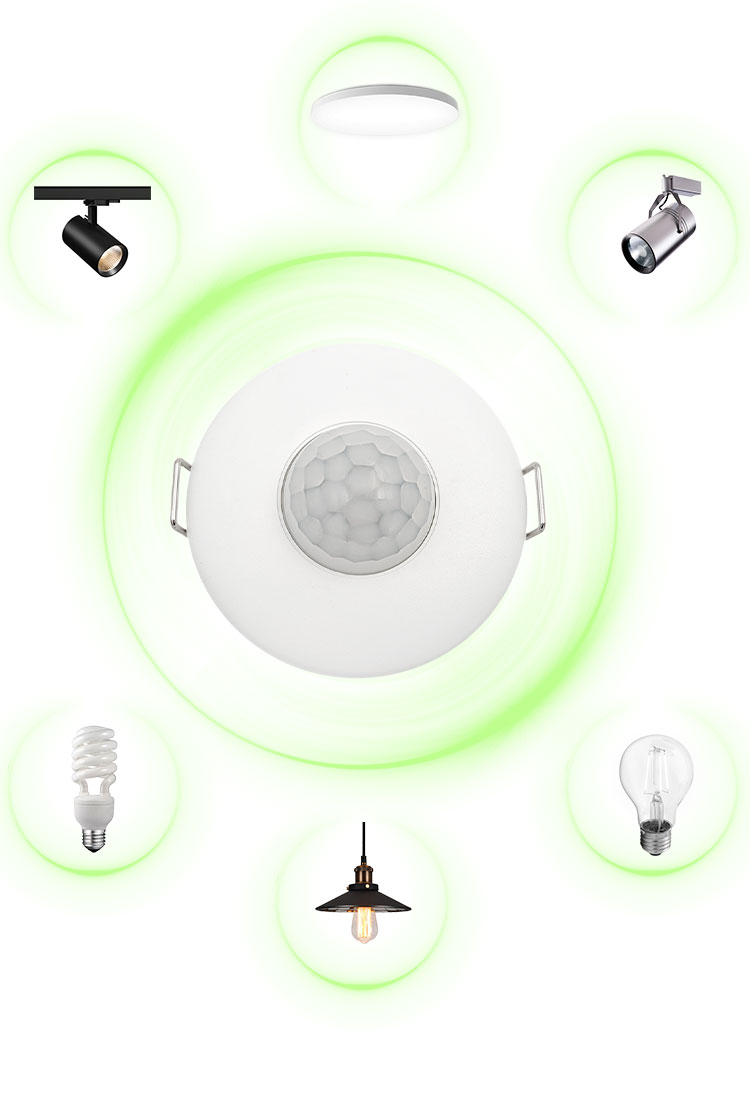

Microwave Sensors: The Perception Revolution Penetrating Darkness and Obstacles
Microwave Sensors: The Perception Revolution Penetrating Darkness and Obstacles
Introduction: Perception Capabilities Beyond Infrared
In the field of sensor technology, infrared (PIR) sensors have long dominated the motion detection market, but they have obvious limitations—they cannot penetrate obstacles and are susceptible to temperature variations. In contrast, microwave sensors , with their unique radio frequency sensing capabilities, are sparking a perception revolution in security, smart homes, industrial automation, and other fields. They can penetrate walls, glass, and even accurately detect motion in complete darkness, equipping smart devices with "X-ray vision."
Microwave Sensors vs. Infrared Sensors: Key Differences
1. Working Principle Differences
(a)Microwave Sensors: Emit 5.8GHz/10.525GHz microwaves and analyze the Doppler effect of the reflected waves.
(b)Infrared Sensors (PIR): Detect changes in human infrared radiation.
2. Penetration Capability
Microwave Sensors: Can penetrate non-metallic obstacles (e.g., glass, wooden boards).
Infrared Sensors (PIR): Cannot penetrate any obstacles.
3. Environmental Adaptability
Microwave Sensors: Unaffected by temperature or light, enabling all-weather operation.
Infrared Sensors (PIR): Prone to false alarms in high-temperature environments and require auxiliary light sources in dark scenarios.
Detection Range
Microwave Sensors: Coverage radius of 10–20 meters (adjustable).
Infrared Sensors (PIR): Typically 5–12 meters (limited by Fresnel lenses).
Power Consumption
Microwave Sensors: Higher (requires continuous microwave emission).
Infrared Sensors (PIR): Lower (passively receives infrared signals).
Typical Application Scenarios
Microwave: Warehouse security (detection through shelves), smart toilets (contactless triggering), automatic doors (resistant to strong light interference).
Infrared: Home lighting control, low-cost security alarms.
Technical Principle: Doppler Effect Enables Precise Perception
The core of microwave sensors lies in Doppler radar technology:
Emit high-frequency microwaves (e.g., 10.525GHz) to cover the detection area.
Receive reflected waves: When a moving object enters, the frequency of the reflected waves shifts (Doppler effect).
Signal processing: Algorithms analyze frequency changes to determine the object's movement direction and speed.
Why Can It Penetrate Obstacles?
Microwaves have shorter wavelengths (centimeter-level), allowing them to penetrate non-conductive materials (e.g., plastic, glass) but reflect off metals. This enables "through-wall detection," though installation positioning must be carefully considered to avoid false alarms.
3. Breakthrough Application Scenarios
(1) Smart Homes: Contactless Interaction
Smart Toilets: Microwave sensors can automatically open lids when users approach, offering greater stability than infrared (unaffected by body temperature).
Invisible Lighting Control: Embedded in ceilings, they detect human movement through drywall, enabling "imperceptible" smart homes.
(2) Industrial Security: All-Weather Monitoring
Warehouse Anti-Theft: Detect intruders through stacked goods, eliminating blind spots of traditional cameras.
Fuel Tank Level Monitoring: Measure liquid levels via microwave reflection, resistant to high temperatures and pressure.
(3) Autonomous Driving: "Eyes" in Rain and Fog
Compensate for LiDAR shortcomings in rain or snow by leveraging microwaves' penetration capabilities to continuously perceive surrounding vehicles and pedestrians.
4. Challenges and Solutions
Challenge 1: False Alarms
Issue: Curtain fluttering or pets moving may trigger detection.
Solutions:
Adjust sensitivity thresholds.
Integrate AI algorithms to distinguish humans from other moving objects.
Challenge 2: High Power Consumption
Optimization Approaches:
Adopt intermittent operation modes (e.g., emitting once per second).
Combine with PIR sensors, activating microwaves only after preliminary infrared triggers.
Challenge 3: Metal Environment Interference
Countermeasures:
Avoid installation near metal surfaces.
Use anti-interference algorithms (e.g., FMCW frequency-modulated continuous wave technology).
5. Future Trends: From Single Perception to Intelligent Fusion
Millimeter-Wave Radar (60GHz): Higher precision for detecting subtle movements (e.g., breathing rates).
Multi-Sensor Fusion: Combine microwave + infrared + ultrasonic for redundant perception systems.
Edge AI Integration: Process data locally in real time, reducing reliance on cloud computing.
Case Study: Tesla's HW4.0 hardware incorporates 4D millimeter-wave radar, paired with cameras for all-weather perception.
6 Conclusion: An Irreversible Technological Shift
Microwave sensors are gradually redefining the technical standards of motion detection. Although their cost remains higher than traditional infrared sensors, their all-weather reliability and penetration capabilities make them irreplaceable in high-end applications. With the advancement of 5G and IoT, this technology will further integrate into smart cities, medical monitoring, and other scenarios, continuously expanding the boundaries of human perception.








